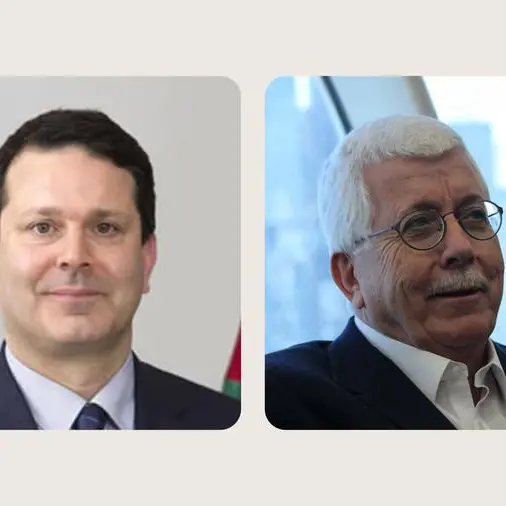Middle East: Following the recent SAMENA Leaders’ Summit, a new ‘5G Experience Benchmark’ has been proposed by Huawei to comprehensively evaluate and enhance 5G services for users across the Middle East. This benchmark is being proposed at a significant time as 5G commercialization rapidly grows across the region. The benchmark aims to enable telecom operators to focus on improving 5G user experiences, make precise investments, and improve ROI.
In the GCC in particular, 5G commercialization is already moving fast. In the past five months, with the release of multiple 5G smartphones, the number of 5G users in the Middle East is estimated to increase from 0.7 million to 3.1 million, realizing around 350% growth. On some networks in Kuwait and Saudi Arabia, for example, the 5G traffic ratio has already exceeded 30%. A positive 5G business cycle is emerging in the Middle East.
Globally, 5G has enabled diversified emerging services from imagination to reality. Taking China and South Korea as examples, VR/AR, 4K, multi-view video, and cloud gaming have brought enhanced digital experiences to many. On the other hand, it also brings 5G user experience issues to the surface. 5G users have higher expectations for 5G, as well as higher requirements for the network experience.
According to the experience of the world's 5G pioneer market, 5G users are mainly sensitive to the network rate, real-time experience, and 5G service availability. In the GCC, the insight also shows that although 5G has been deployed on a large scale, there are many opportunities to enhance user experience with better speed and less latency, especially for gaming and video users. This requires the industry to build a unified benchmark to evaluate comprehensive 5G experiences, again enabling operators to focus on the user experience, make precise investments, and improve ROI.
In the SAMENA Leaders’ Summit, Huawei proposed the 5G experience benchmark by an S.L.A. model, which considers factors including 5G spectrum bandwidth, download rate, E2E latency, and coverage, to comprehensively evaluate the 5G user experience. The 5G S.L.A user experience benchmark includes three main indexes, Speed, Latency, and Availability, and the overall index is calculated by S*L*A.
S indicates the speed. The average downlink rate of 5G UEs is measured and divided by the benchmark value according to different bandwidth to obtain an index score. This index will support operators to evaluate its speed quality who has different spectrum bandwidth.
L indicates latency. The top 5G applications are measured and calculate the good latency ratio to obtain an index score. This index will support operators to evaluate E2E latency quality for its top applications.
A indicates the availability of 5G network. The 5G availability score is obtained by identifying the current network population coverage and multiplying the 5G network camping ratio. This index will support operators to evaluate its 5G availability for end users in combination of 5G covered areas and non-covered areas.
The score obtained by multiplying the three indexes, is the final network experience benchmark value.
The 5G experience benchmark is a multi-dimensional comprehensive measurement model. For the specific measurement method and detailed scoring mechanism, it is suggested that regulatory authorities and operators should discuss and cooperate to further clarify the quantification. For example, top services on an operator's network are different. Based on different services, entities need to perform modeling based on a large number of live network samples or lab test data.
In addition, the baseline values corresponding to good user experience, such as the rate and latency, are provided to help measure and score the network experience gap and identify the operator network construction direction. It is hoped that regulatory agencies and operators can reach a consensus on the availability of rate and latency firstly, use these dimensions as the criteria for measuring their networks, and then perform detailed measurement and analysis based on their networks.
This is the key for operators to identify the experience problems and gaps, then to make precise investments and to improve the user experience, finally accelerate digital economic growth.
© Press Release 2021
Disclaimer: The contents of this press release was provided from an external third party provider. This website is not responsible for, and does not control, such external content. This content is provided on an “as is” and “as available” basis and has not been edited in any way. Neither this website nor our affiliates guarantee the accuracy of or endorse the views or opinions expressed in this press release.
The press release is provided for informational purposes only. The content does not provide tax, legal or investment advice or opinion regarding the suitability, value or profitability of any particular security, portfolio or investment strategy. Neither this website nor our affiliates shall be liable for any errors or inaccuracies in the content, or for any actions taken by you in reliance thereon. You expressly agree that your use of the information within this article is at your sole risk.
To the fullest extent permitted by applicable law, this website, its parent company, its subsidiaries, its affiliates and the respective shareholders, directors, officers, employees, agents, advertisers, content providers and licensors will not be liable (jointly or severally) to you for any direct, indirect, consequential, special, incidental, punitive or exemplary damages, including without limitation, lost profits, lost savings and lost revenues, whether in negligence, tort, contract or any other theory of liability, even if the parties have been advised of the possibility or could have foreseen any such damages.










